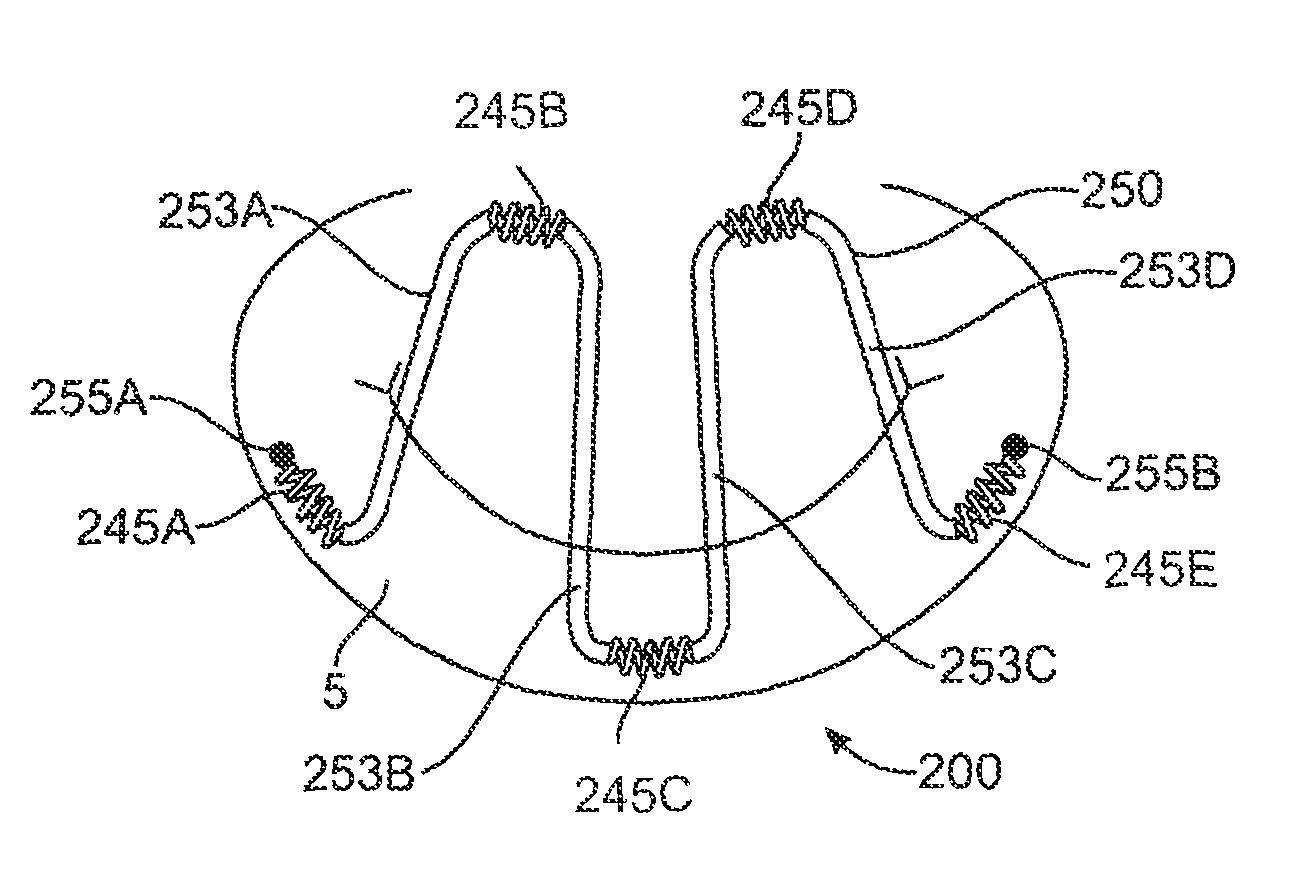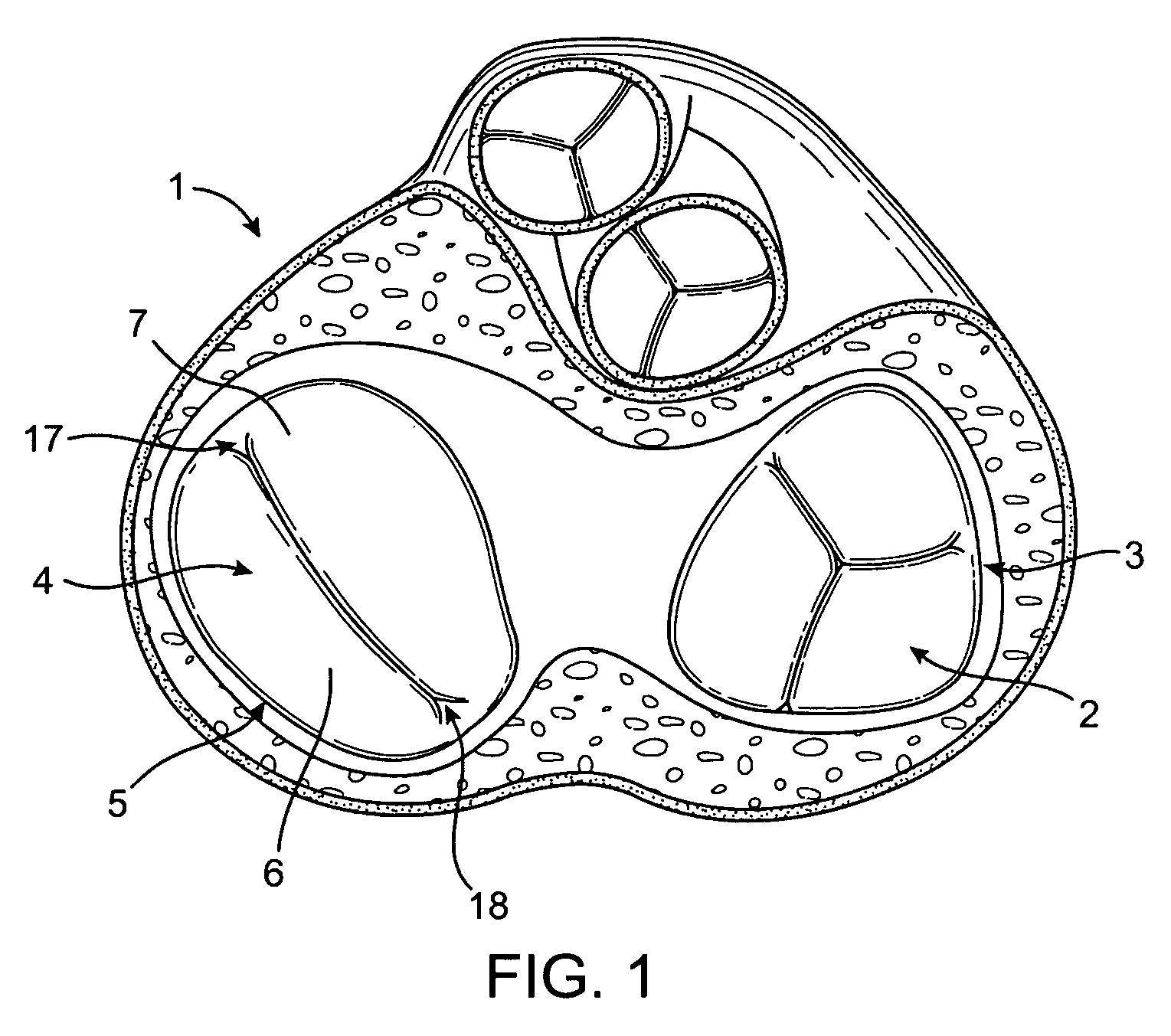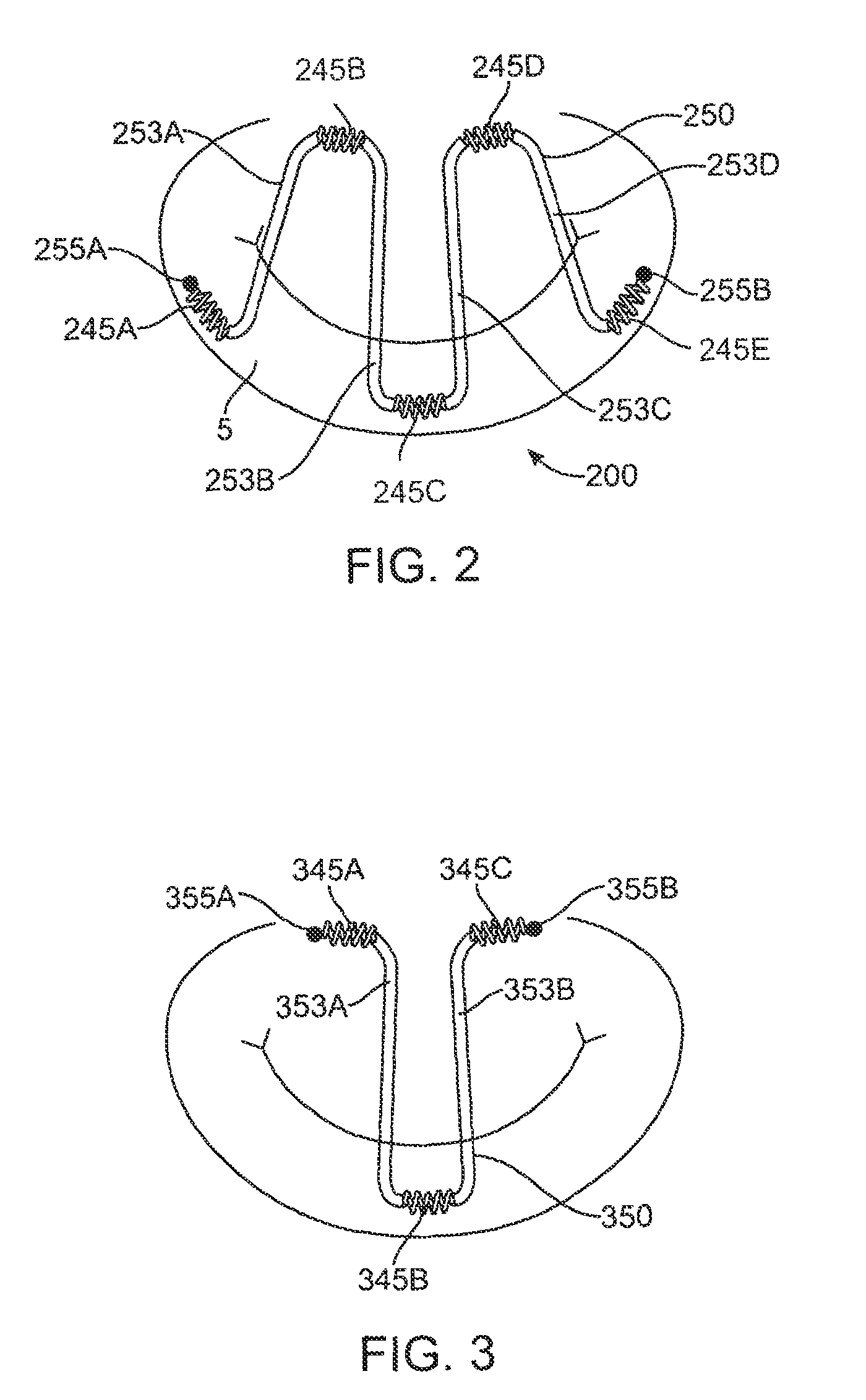Devices and methods for treating valvular regurgitation
a technology of mitral valve and valve valve, applied in the field of mitral valve regurgitation treatment, can solve the problems of distorting the shape of the mitral valve, reducing the ejection volume and reducing the size of the left ventricle to compensate with a larger stroke volum
- Summary
- Abstract
- Description
- Claims
- Application Information
AI Technical Summary
Benefits of technology
Problems solved by technology
Method used
Image
Examples
Embodiment Construction
[0023]The invention will now be described by reference to the figures wherein like numbers refer to like structures. The terms “distal” and “proximal” are used herein with reference to the treating clinician during the use of the catheter system; “Distal” indicates an apparatus portion distant from, or a direction away from the clinician and “proximal” indicates an apparatus portion near to, or a direction towards the clinician.
[0024]The current invention discloses devices and methods for treating regurgitation in cardiac valves. While these devices and methods are described below in terms of being used to treat mitral valve regurgitation, it will be apparent to those skilled in the art that the devices could be used on other cardiac valves, also. Tensioning devices of the current invention comprise helical anchors, at least one tension filament, and locks. The tensioning devices are used to modify the shape of heart valves for treating valvular regurgitation. The systems of the cur...
PUM
 Login to View More
Login to View More Abstract
Description
Claims
Application Information
 Login to View More
Login to View More - R&D
- Intellectual Property
- Life Sciences
- Materials
- Tech Scout
- Unparalleled Data Quality
- Higher Quality Content
- 60% Fewer Hallucinations
Browse by: Latest US Patents, China's latest patents, Technical Efficacy Thesaurus, Application Domain, Technology Topic, Popular Technical Reports.
© 2025 PatSnap. All rights reserved.Legal|Privacy policy|Modern Slavery Act Transparency Statement|Sitemap|About US| Contact US: help@patsnap.com



